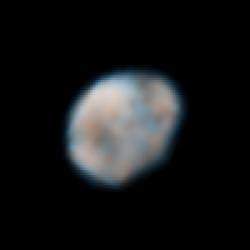Asteroid 4 Vesta is the second largest asteroid in the Solar System, stuck between the orbits of Mars and Jupiter. It was fully formed early on, turning solid and crystallizing within 10 million years of the Solar System’s formation. How do scientists know this? They’ve found a little piece of it right here on Earth. A Vesta meteorite discovered in Antarctica that tells the history of the early Solar System.
A study is being led by researchers from the University of Toronto. Their subject is a volcanic meteorite discovered in Antarctica during a recent survey. The space rock contains tiny zircon crystals that match the chemical makeup of Asteroid Vesta. It belongs to a class of objects called eucrites – meteorites that formed from volcanic activity.
Scientists believe that Vesta was quickly heated, and then melted into a metallic and silcate core, similar to the process that happened here on Earth billions of years ago. The radioactive decay from abundant minerals in the early Solar System was thought to provide the energy for this process.
Based on their analysis, this meteorite – and therefore Vesta – was once boiling rock that quickly turned solid and crystallized. This change, from liquid to solid happened within 10 million years of the Solar System’s formation. This information gives scientists clues about how our own planet solidified out of the Solar System’s protoplanetary disk.
Original Source:University of Toronto News Release

